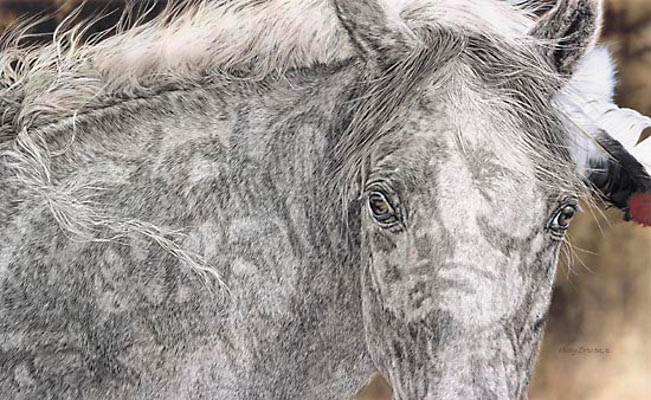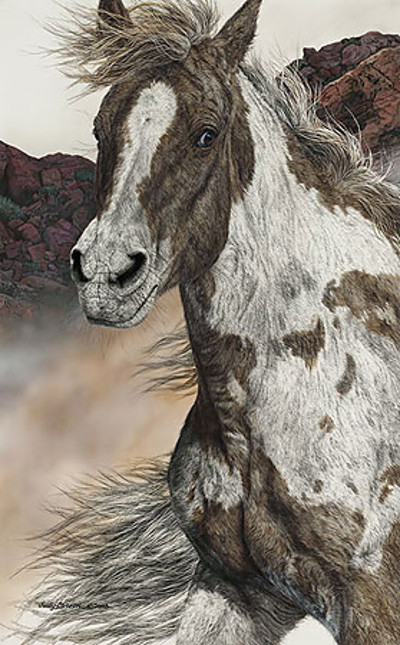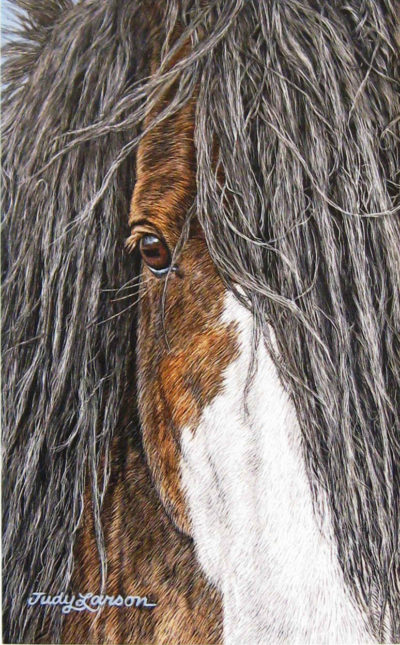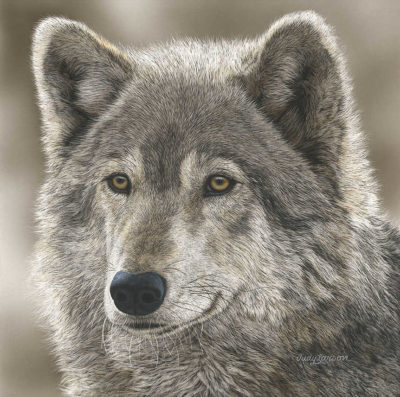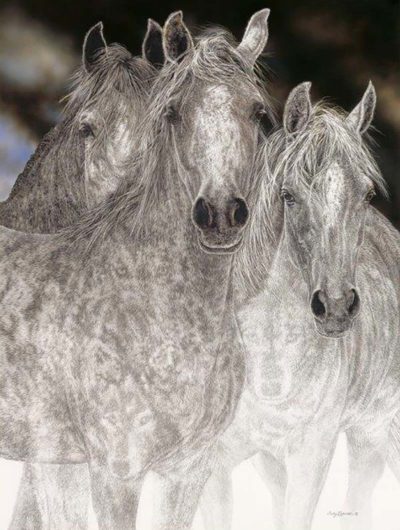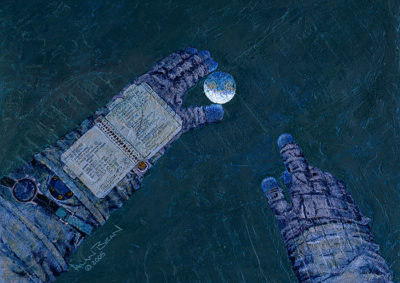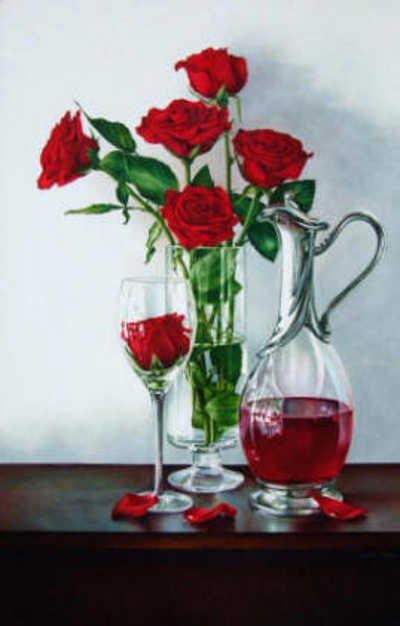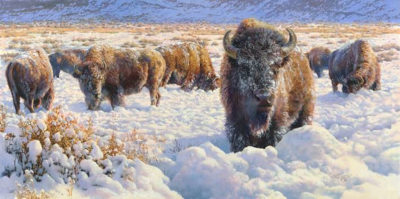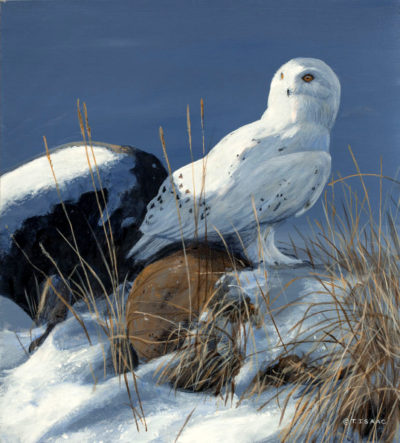Red Horse
Artwork Description
In 1876, at the Battle of the Little Bighorn, Custer’s troops were badly outnumbered, although just how many Indians fought that day has always been a matter of debate. But by any account it was a tremendous gathering of mostly Sioux (as the Lakota were called) and Cheyenne Indians that were sprawled for several miles along the western bank of the Little Bighorn River, poised to meet Long Hair’s army.
Custer had decided to have each of the companies in his 7th Cavalry ride a designated color of horse. Since his troop commanders were allowed, according to their rank to select the color they preferred, some officer favored the scheme more than others. E Troop, whose soldiers fell low on the totem pole, ended up with the least desirable but visually striking grays.
Red Horse, a Minneconjou Lakota and a chief, was with his band in the center of the encampment. He was not involved in the battle until Custer approached from the opposite direction wherein Red Horse and other warriors crossed the river to do battle. As the fighting intensified on the eastern side of the river, the 213 men of E Troop desperately tried to hold the ridge against the Indian advance. With the fierce battle reduced to hand-to-hand combat, the cavalrymen were unable to shoot and hold their horses at the same time. The last of the gray horses were released, some shot, some captured.
Red Horse was not only a participant but a verbal and visual witness. His forty-one color pictographs — called ledger drawings — depicting all phases of action are on display at the Smithsonian Institution.
“Of course, I could not resist the intriguing coincidence of the gray horses of Troop E involved in battle with an Indian named Red Horse. This offered me the perfect opportunity to use camouflage to arouse the curiosity of the viewer and encourage him to step away from the painting. At first glance what one sees is a painting of a gray horse called Red Horse. I hoped that people would look more closely, wondering what the title meant to convey.”

